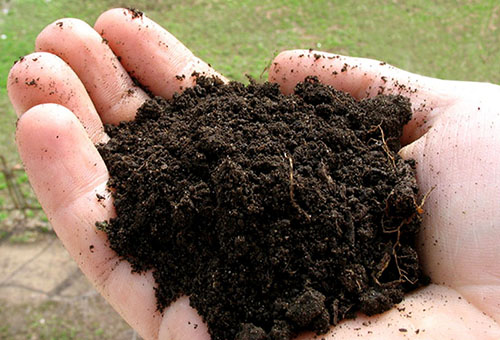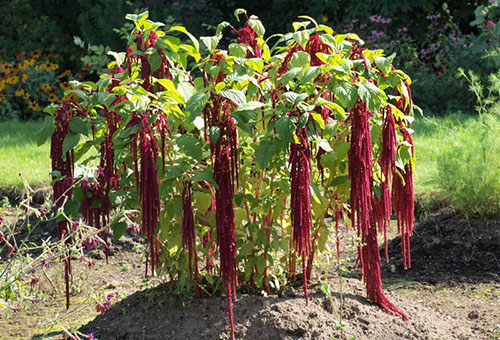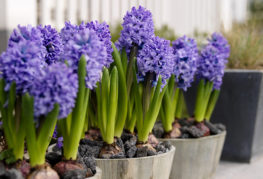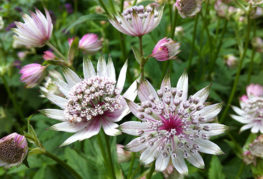Preparation and cultivation of amaranth from seeds
You do not need to have a special agricultural education in order to plant amaranth on your site. Growing this plant and caring for it is not particularly difficult. In early March, you can begin to germinate seeds for further planting in open ground.
Soil preparation
In order for the flowers to feed on all the necessary vitamins and minerals, you need to prepare a special soil. You can buy it in a store or prepare it yourself - for this, cleaned sand must be mixed with humus in a ratio of 1/3.
So that the soil does not contain pests or fungi, it must be warmed up as best as possible. Boxes or pots for planting should be at least ten centimeters high, since the plant grows quite high even in germination. Growing amaranth from seeds does not require special knowledge, the only thing that should be taken into account is the correct preparation of containers for sprouts, they must have holes for moisture removal. Make them yourself if they are absent, because without the possibility of the outflow of excess moisture, the seeds can simply rot without starting to germinate. The planting depth of the seeds should be about 2 centimeters, after which the containers should be covered with foil.
Like any plant, amaranth requires warmth and light, so boxes or pots of seedlings should be kept in warm and well-lit places. Don't overdo it with watering, as this can ruin your seeds. It is best to moisten the soil with a special sprayer. Temperature plays an important role in seed germination, so if you want to see germinated sprouts after 3-4 days, you should maintain the temperature at 22 degrees. If it is below 17 degrees, then the sprouts will appear after ten days. To grow strong and healthy flowers, you need to thin out the seedlings, leaving only the strongest and strongest.
Planting amaranth sprouts in open ground
Growing amaranth is not difficult, since the flower is quite picky and takes root anywhere. But you should take into account some of the nuances when planting seedlings in open ground. Since the seedling requires heat and sunlight, planting in such conditions will significantly affect not its growth and the bright color of the inflorescences. The soil and its composition play an important role: swampy and moist soil contributes to the development of rot. Therefore, the soil must be sandy loam or loamy.
If you have already found a place for planting sprouts, the ground should be prepared for planting in the fall. To do this, you need to fluff the soil, and also apply mineral fertilizers or humus. Amaranth is a friendly flower, so it can be planted in close proximity to other ornamental plants in a flower bed or vegetable garden. To emphasize the beauty of the inflorescences, it is better to plant it in the background of a flower garden or flower bed.
In late April - early May, you can start planting sprouts from greenhouses in open ground. But since the seedlings have been warm for a long time, they need to be prepared for outdoor conditions and temperature changes. This must be done in stages.
- Reduce watering about a week before going outside.
- Also, in the first 2-3 days, you should take the pots or boxes with seedlings outside for hardening, but take them into the house at night.
- After 4–5 days, the seedlings can be left overnight in new conditions, but you need to monitor their condition. If you notice that they wither, freeze or dry out, do not rush to disembark.
If you have prepared the soil correctly and the plant has already taken root in outdoor conditions, you can plant the plant in open ground.To make it easier to remove flowers from pots or boxes and planting does not take much time, you should moisten the ground in advance. When amaranth is planted in rows, you need to leave 70-80 centimeters between flowers. When flowers are planted in bushes, the distance between them should be 50-60 centimeters. After making the indentations, transplant the seedlings from the pots into the soil at a slight slope to the first leaves. For plants to feel good on the first day, planting should be done in the evening or in cloudy weather. After disembarking, you need to water the amaranth, but without fanaticism.
Amaranth care after disembarkation
In order for amaranth to give a good harvest and beautiful inflorescences, you do not need to adhere to special rules, since it is quite friendly and unpretentious, but timely care will not be superfluous. Like most plants from which a good harvest is expected, amaranth needs fertilization and feeding. Although the flower is drought tolerant, it is best to water it in a timely manner, as growth may dull. He can also be invaded by aphids, therefore, for prevention or treatment, the bushes should be treated with biological preparations. Such care, moreover, will significantly improve the yield.
In order for the flowers to be lush and fertile, they need to be looked after, weeded and huddled. With proper care, amaranth can produce large and lush inflorescences.
Advice
- So that the inflorescences do not break or get damaged, they need to be tied up in a timely manner.
- In order for the flowers to be stable, and the number of ovaries to increase, pinch the tops in June-July.
When the flowers ripen in the autumn, you can safely harvest and prepare it for planting next year.
It is very easy and simple to grow amaranth, plant it and take timely care of this plant. You don't need any special education to decorate your flower bed or flower garden with such a nice flower. Amaranth seeds are very useful, they can be used as food for birds, as well as eaten, added to dishes, or baked with them. The whole summer you can admire the bright and lush flowers, and in the fall, when the flowers are ripe, you will reap a large harvest.









and will be published shortly.